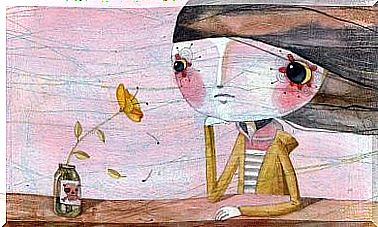Instagram And Why It Is Harmful For Children

We do not know if social media in a few years will be ranked as one of the most harmful and meaningless elements on the internet. Perhaps studies will continue to reveal that social media platforms like Instagram are bad for physical and mental health.
We still do not have enough data to reach a definitive conclusion, but many investigations already point to important facts about how we use social media. It seems that social media affects psychological health. The level depends on the user’s personality, the amount of time he spends on them, the platforms the person uses and the age when he or she started using social media.
We know that social media platforms can be addictive. Like substances, they seem to affect the nerve circuits that control the concept of reinforcement. Their use can even lead to tolerance and withdrawal symptoms.
Different social networks, different effects
We have all probably experienced the feeling of inferiority, restlessness and even anxiety when we use social media. This is either due to the negative comments from internet trolls or the unrealistic expectations that “photoshopped” images lead to. Although you may have already had suspicions about the negative effect social media can have on your health, a new study has really given rise to clouds of unrest.

This study found that Facebook, Snapchat, Instagram and Twitter can cause serious mental harm to people aged 14-24. Instagram is the most harmful network for young people according to the study, which was published by two organizations: the Royal Society for Public Health and the Young Health Movement.
To conduct the study, nearly 1,500 people aged 14-24 were asked to share the impact that five social networks had on their lives. There were 14 criteria, including loneliness, self-esteem, anxiety, stress and harassment. Of them all, Instagram received the worst rating.
But Snapchat, Facebook and Twitter were not far behind. These three social networks also negatively affect users’ well-being, and researchers believe they promote anxiety. The only social network that the researchers considered positive was YouTube. However, some felt that this page and its contents made them sleep less than they should.
“It’s interesting to see Instagram and Snapchat rank as the worst for mental health and well-being – both platforms are very focused on the impression you give, and it seems that they can promote feelings of inadequacy and anxiety in young people,” said Shirley Cramer – Head of the Royal Society for Public Health.
Instagram and the dissolved self
It may seem that Instagram has less content than other social networks. The main component of this platform is its images. You follow friends or acquaintances, or you follow celebrities and other people via “hashtags” and general profiles. They are available to everyone.
This is the social network that has the most young users. This entails a considerable risk, as these young people undergo the process of personal development. In the same way, they are at a stage where they acquire values. Social networks teach them that hard work and dedication to a profession is less valuable than posing for pictures.
Some social networks no longer revolve around relating to others. Instead, they have become advertising spaces for various brands. Social networks have become business networks, and users are its main products and consumers. Many companies also see business opportunities in mothers who advertise the brands their children wear. By doing so, they turn children (often minors) into products.
Fake it ’till you make it
If children see a superficial and vain person without an actual job who has thousands of followers, they may think this is someone worth imitating. They begin to act unnaturally and “Like” things they are not really interested in. As a consequence, their selves may become contemptuous, fragmented, and dissolved.
On this social network, there are too many photos of clothes, houses, travel, friends, jokes, kisses and hugs. For each account that provides some uniqueness, there are ten accounts that try to influence you through powerful, seductive and hidden vanity.
You can not resist looking at nice pictures now and then. It is understandable that you want similar images yourself when you see them. You may even want to go on a journey just like the one you see. But what does the labor market look like today? What kind of income do young people need to have to live a good life? How much difference is there between the images on social media and real life? Do you really want its stuff? Do you really need them in your life?

The experts must start acting
When the social networks you spend a lot of time on do not represent reality in a good way, doubts arise about your understanding of life, society and the value of effort and hard work.
People see attractive values in this “false” reality that can not be found in real life. Therefore, they begin to think about important values in their lives, such as education, hard work, effort and dedication.









